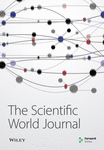Circulating Ribonucleic Acids and Metabolic Stress Parameters May Reflect Progression of Autoimmune or Inflammatory Conditions in Juvenile Type 1 Diabetes
Abstract
The sensing of ribonucleic acids (RNAs) by the monocyte/macrophage system occurs through the TLR7/8 Toll-like receptor family, the retinoic acidi–nducible protein I (RIG-I), and the melanoma differentiation–associated protein-5 (MDA-5). The aim of the present study was to evaluate the effect of circulating RNAs, isolated from juvenile type 1 diabetic patients and healthy control children, on the inflammatory, apoptotic, and antiviral response in human peripheral blood mononuclear cells (PBMCs) isolated from a healthy donor. Obtained effects were compared to the effects of metabolic stress parameters (hyperglycemia, oxidative and nitrosative stress). Forty-eight patients with juvenile type 1 diabetes and control children were included in the study. By performing the chromatographic analysis of circulating RNAs, the peak at the retention time 0.645 min for diabetic and control RNA samples was identified. To determine whether circulating RNAs have an agonistic or antagonistic effect on the signaling pathways involved in inflammatory, apoptotic, and antiviral cascade, their effect on TLR8, RIG-I, MDA-5, MyD88, NF-κB, IRF-3, phosphoIRF-3, IRF-7, RIP, and p38 was evaluated. A significantly lower level was achieved by cultivating PBMCs with circulating RNAs isolated from type 1 diabetic children, compared to the intact PBMCs, in relation to TLR-8, MDA-5, NF-κB, phospho IRF-3, and RIP, while it was higher for Bax. All the metabolic stress conditions up-regulated NF-κB, Bcl-2, and Bax. The NF-κB, determination seems to be the most sensitive parameter that may reflect disease processes associated with the progression of autoimmune or inflammatory conditions, while the IRF3/phosphoIRF3 ratio may suggest an insufficient antiviral response.




